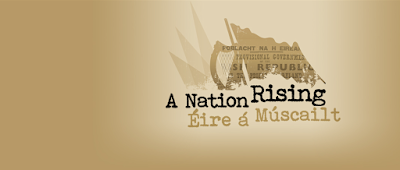Remembering the Rising: The Pearse Brothers and QCG Visitor Book, 1899
Today, the third of May 2016, marks one hundred years to the day of the first executions of the leaders of the 1916 Rising. The executions were carried out at the Stonebreaker's Yard of Kilmainham Jail. On May 2nd 1916, the first courts martial sentenced Padraig Pearse, Thomas Clarke and Thomas MacDonagh to death. Pearse, a founding leader of the Volunteers, Commander-and-Chief of the rebel forces and stationed at the G.P.O. on O'Connell Street at the height of the conflict, along with fellow signatories of the Proclamation, Thomas Clarke and Thomas McDonagh, were executed by firing squad. Between the third of May and the twelfth of May 1916, fifteen leaders of the Rising would be executed. Among the fifteen were others such as Willie Pearse, brother of Padraig. Though not considered a senior leader or instigator of the Rising, Willie Pearse was also executed by firing squad, largely because he was Padraig's brother, on the fourth of May.
As part of A University in War and Revolution: 1913-191 The Galway Experience currently on at the Hardiman Research Building, NUI Galway, a central item on exhibit is the University Visitor Book for Queen's College Galway (NUIG's former title). The visitor book records the signatures of both Pearse brothers, which they sign in Irish, Padraig agus William MacPiarais.
 |
| Q.C.G. Visitor book with signatures of Padriag and William Pearse |
The visit by both Pearse brothers to the University campus in Galway in August 1899 is a truly unique moment in the University’s history. The presence of both signatures, when Padraig and William were nineteen and twenty years of age respectively, offers an illuminating insight into the exhibition, which tells the story of the University's impact and influence in major events of the time, such as the role of college students and academic staff in both the Rising and the War effort in Europe at the time; women in revolution; the place of the Irish language and also the post-1916 political landscape of the West of Ireland as seen at the 1918 election.
The exhibition is open to all and entry is free.

Comments